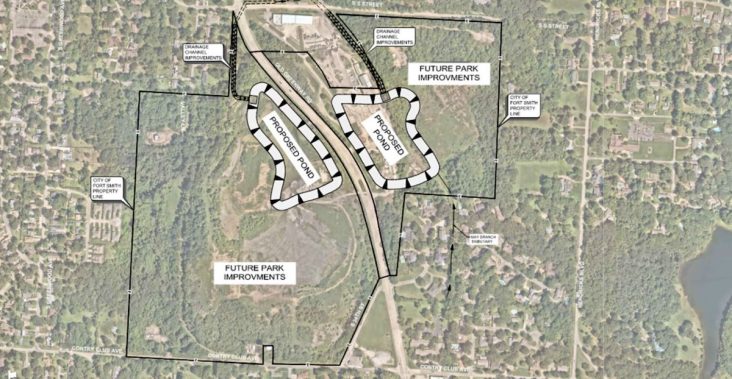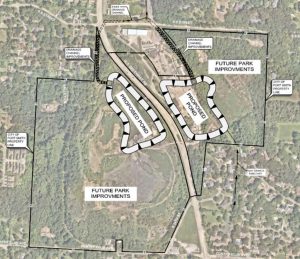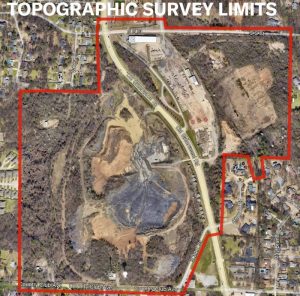Planning for use of ACME brick yard property discussed by Fort Smith Board
by January 15, 2025 2:03 pm 1,118 views

Part of an early possible use outline of the former ACME Brick Yard property in Fort Smith.
The path is uncertain on how to develop the more than 100 acres that was once the ACME brick facility in Fort Smith, with city staff suggesting a holistic long-term master plan, and some Fort Smith Directors questioning the staff’s recommendation.
The Board of Directors approved the $2.288 million purchase of 111.31 acres formerly utilized by ACME Brick Company in October 2023. Plans at the time were to use the property for flood mitigation and park amenities such as trails and bike paths.
Interim City Administrator Jeff Dingman, Deputy City Administrator Maggie Rice, Director of Engineering Stan Snodgrass, Director of Streets and Traffic Control Matt Meeker, and Director of Parks and Recreation Sara Deuster were tasked to help develop a plan for the property. With Fort Smith Board approval, Richardson, Texas-based Halff Associates was hired as the engineer for the flood – storm water – mitigation design, and Des Moines, Iowa-based RDG Planning and Design was selected for park master planning.
“The goal of such development is to make this property a premier destination in the center of Fort Smith that provides active and passive recreation amenities for citizens,” noted part of a memo from Deuster, Meeker and Snodgrass to Dingman, adding that they believe “flood mitigation and future park development, must be a collaborative, unified effort to ensure the best use of this property.”
Snodgrass said the cost to build two proposed water detention ponds on the property is $5.2 million. That money would come from the city’s 1% street tax program, which is on track to generate around $29 million in 2024. Any park amenity costs are unknown.

During a Tuesday (Jan. 14) board study session, Scott Crawford with RDG and Travis Brisendine with Halff presented initial concepts and ideas to the board. Crawford said part of the work is to “accelerate the pace in which the detention and storm water” facilities can be built, while also integrating plans for trails and other park amenities. The RDG work, Crawford said, also includes ideas on “a funding strategy” and a study to determine “the market viability of revenue generating options’ at the park.
Directors Lee Kemp and Kevin Settle pushed back against the recommendation to combine design and planning for the detention ponds and park amenities. Settle said the initial RDG presentation did not include a mention of a mountain bike component.
“I struggle with this because I’m not hearing about a mountain bike park. … That’s how we were sold this. But now I’m hearing something different,” Settle said.
Kemp noted several times during the Tuesday discussion that the city should first focus on the detention ponds and at a later date work on park design plans.
To Settle’s point, Dingman said the public input process will help decide what amenities are included in the park. Crawford noted in his presentation that a “robust community engagement process” will include social media outreach and four public input sessions. Preliminary plans have those sessions set for July and November of 2025, and February and May of 2026.
“The public input component becomes very important” in the process, Dingman said.
Dingman said a master plan that determines priorities is preferred because it allows for the best use of funds for long-term planning and construction on the property. He also said the planning will include operational procedures that could have revenue generating options.
The board is set to vote at the Feb. 4 regular meeting on how to move forward with property development master planning.

